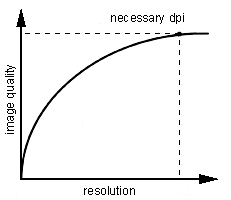
3. Conversion
Key Conceptsintroduction
scanning factors
rich digital master
benchmarking
text
stroke
continuous-tone halftone
proposed method guidelines
additional reading

THE
CASE FOR CREATING A RICH
DIGITAL MASTER
There are compelling preservation, access, and economic reasons for creating
a rich digital master image file (sometimes referred to as an archival
image) in which all significant information contained in the source document
is represented.
Preservation
Creating a rich digital master can contribute to preservation in at least
three ways:
Access
A digital master should be capable of supporting a range of users' needs
through the creation of derivatives for printing, display, and image processing.
The richer the digital master, the better the derivatives in terms of
quality and processibility. User expectations will likely be more demanding
over time--the digital master should be rich enough to accommodate future
applications. Rich masters will support the development of cultural heritage
resources that are comparable and interoperable across disciplines, users,
and institutions.
Cost
Creating a high quality digital image may cost more initially, but will
be less expensive than creating a lower quality image that fails to meet
long-term requirements and results in the need to re-scan. Labor costs
associated with identifying, preparing, inspecting, indexing, and managing
digital information far exceed the costs of the scan itself.
The key to image quality is not to capture at the highest resolution or bit depth possible, but to match the conversion process to the informational content of the original, and to scan at that level--no more, no less. In doing so, one creates a master file that can be used over time. Long-term value should be defined by the intellectual content and utility of the image file, not limited by technical decisions made at the point of conversion.

No More, No Less: As
resolution increases, image quality will level off.
© 2000-2003 Cornell University Library/Research Department